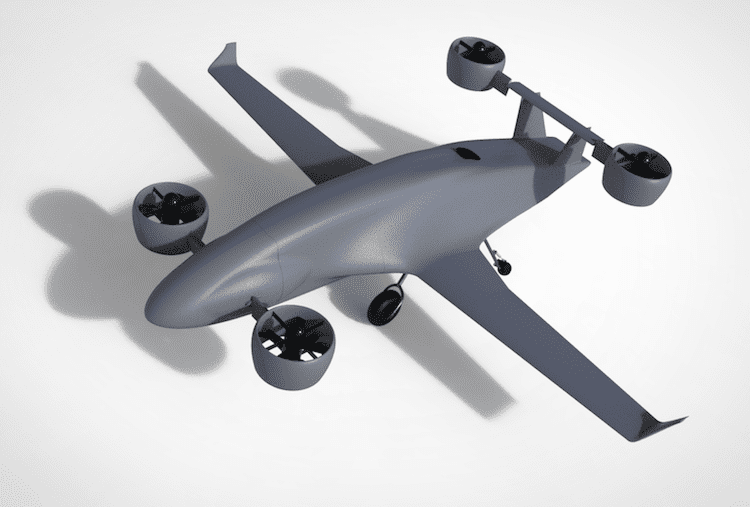
A computer rendering of Sabrewing’s Rhaegal EVTOL cargo aircraft. Photo: Sabrewing
The aviation industry’s first commercial purchase for electric vertical takeoff and landing (eVTOL) aircraft will enable cargo carrying missions between mainland Alaska and the St. Paul and St. George islands under a new $43 million agreement signed between Sabrewing and the Aleut Community of St. Paul Island.
Sabrewing Aircraft Co., an eVTOL startup based in Camarillo, California, signed what it describes as an agreement to provide a fleet of 10 cargo-carrying eVTOL aircraft, the Rhaegal and the Wyvern. The company will also provide equipment and training enabling the Aleut community, a tribe of native Alaskans, to initiate and operate a complete test range complex, known as the St. Paul experimental test range.
Centered in the Bering Sea, 770 miles west of Anchorage, the flight corridor from St. Paul Island to mainland Alaska will become one of the largest unmanned aircraft flight test ranges in North America.
Ed De Reyes, chief executive of Sabrewing Aircraft Co., told Avionics International that the company is close to finishing production of its first prototype aircraft and plans to start flight testing at the end of the year.
“The main purpose of the purchased aircraft are to provide reliable food, medicine and other life-essential supplies from the mainland of Alaska to St. Paul Island, and more importantly to the Island of St. George,” De Reyes said, noting that St. George Island has no deep water port.
St. George is also shrouded in windy and foggy weather patterns that prevents cargo flights on all but the rarest of good weather days, he said. That’s why the community selected Sabrewing’s 800-pound payload Rhaegal and 4,400-pound payload Wyvern. Both aircraft can fly at altitudes of up to 22,000 feet, are operated remotely and feature folding wings and nose designs that allow them to land in tight spaces.
Both Sabrewing variants are gas-electric hybrid aircraft, capable of taking off and landing vertically in all weather conditions. The aircraft use a turbo electric system powered by a Rolls Royce M250 turbine that provides power to the generators for four ducted fans, located on each corner of the two airframe variants. Each variant is also capable of generating 500 kilowatts of electric energy.
A five-sensor detect and avoid and anti-collision radar system help the Sabrewing aircraft to fly autonomously. The flight control system also features three separate auto pilots, each with an inertial measurement unit and independent wide area augmentation system GPS antenna.
“If we lose one auto pilot, we still have two others that can take its place and navigate the aircraft. The flight plan is loaded into each autopilot, and then they can fly the flight independently if needed,” De Reyes said.

A computer rendering showing what a Sabrewing Rhaegal looks like with its wings folded. Photo: Sabrewing
A mix of universities and aircraft electronics suppliers provided the sensors, software and auto pilot system, including Garmin, FLIR, uAvionix and the University of California among others. A subscale model of their first aircraft has already been produced, and Sabrewing is targeting 2023 for achieving FAA Part 23 or a subsequent level of eVTOL certification for their first production Rhaegal.
The purchase agreement by the Aleut community comes after a $2 million round of funding was provided to Sabrewing in February lead by the Drone Fund and Idaten Ventures.
De Reyes said the company is seeing interest for the use of its EVTOLs on other missions as well, including surveillance and medical transportation for hospitals.
“People are now thinking of missions that we had never envisioned before, we can fly farther and faster in any weather than most helicopters today,” he said.